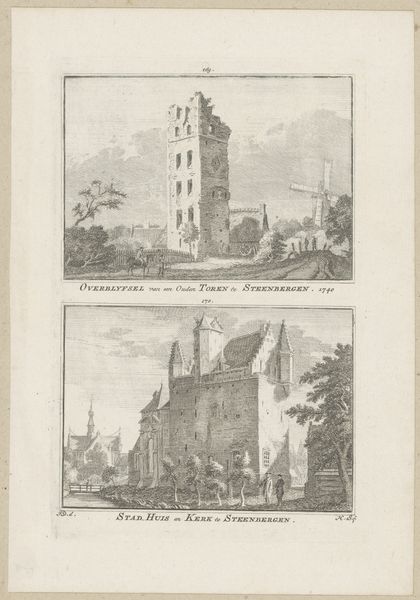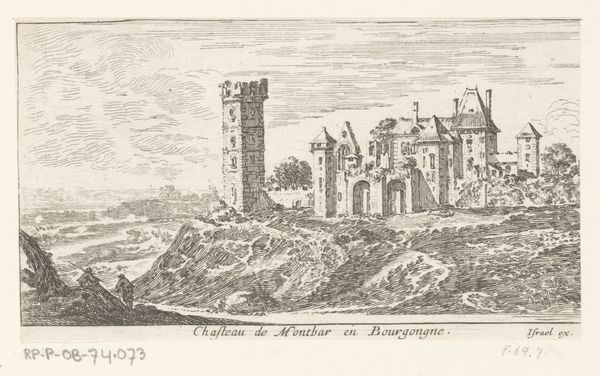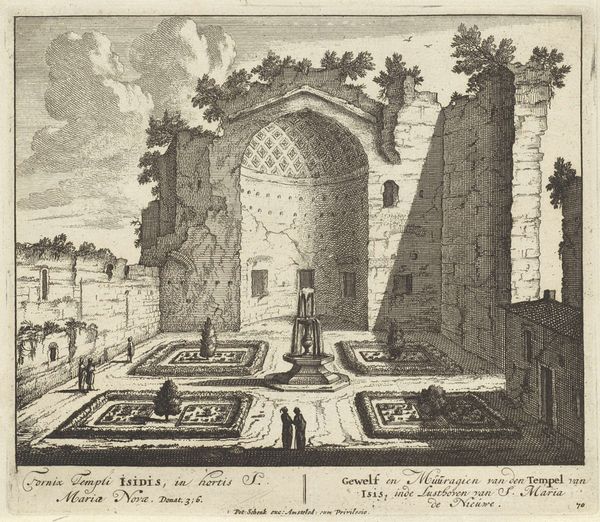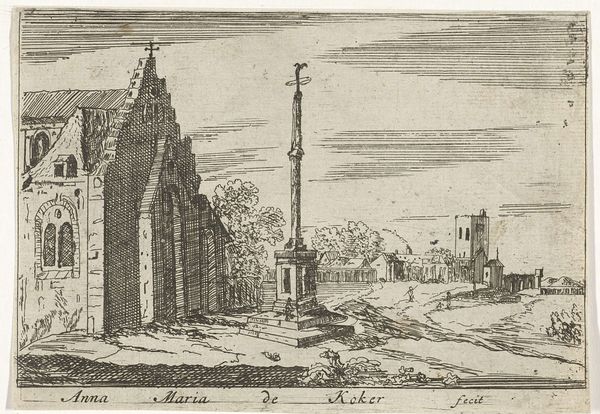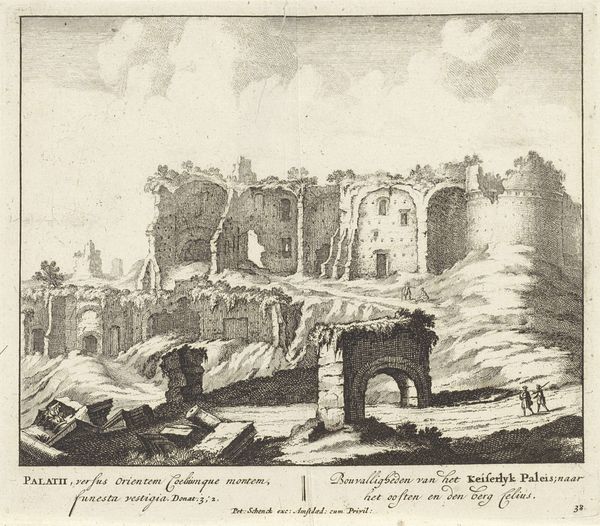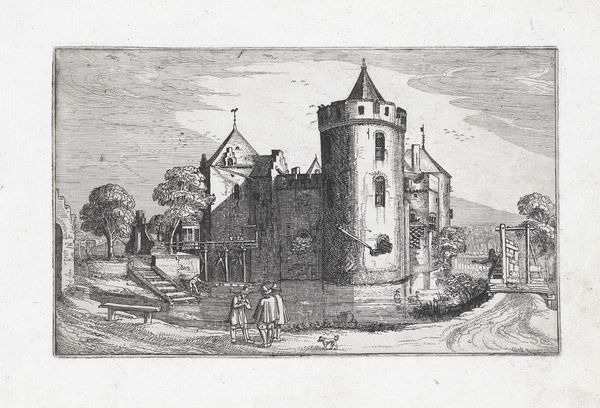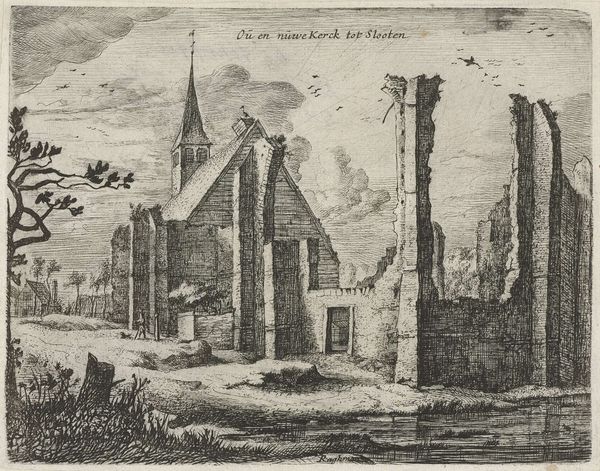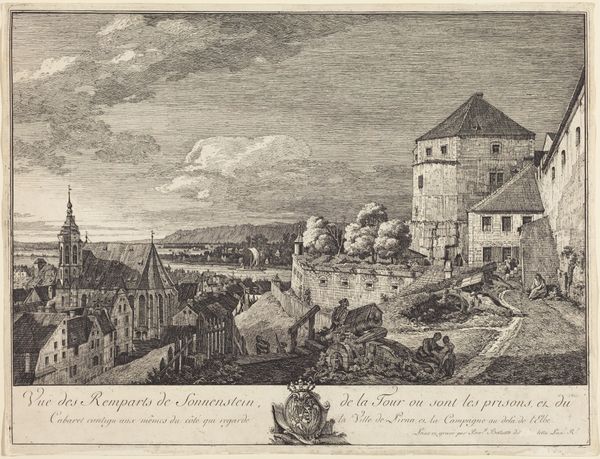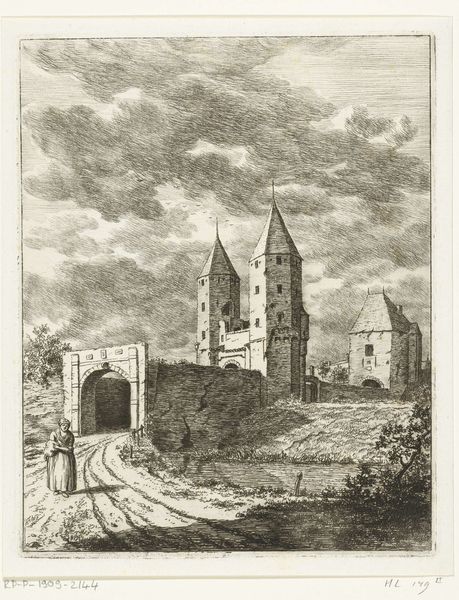
print, etching, engraving, architecture
#
baroque
# print
#
etching
#
old engraving style
#
landscape
#
house
#
19th century
#
engraving
#
architecture
Dimensions: height 75 mm, width 110 mm
Copyright: Rijks Museum: Open Domain
Curator: So, Editor, what grabs your attention about this print? Editor: This is Hendrik Spilman’s 1752 etching, "Ruïne het Huis ter Kleef, Haarlem," housed at the Rijksmuseum. It shows the ruins of a house… the strong lines give it a somewhat melancholic air. How should we understand this through the lens of its material existence? Curator: A powerful question. It's not just *what* is depicted but *how*. Think about etching itself: the process of biting into metal with acid to create these lines, multiple prints can be created. Consider the labor involved in the creation of both the house and the print. What social strata were involved in the building, maintaining, and its eventual decay? Also in making the art showing the decay. Editor: That makes me think about the print market at the time. Were these mass-produced for public consumption, or intended for a more elite clientele? Were they responding to some specific historic or economic events in Haarlem? Curator: Precisely. Prints like these made imagery more accessible. It served a burgeoning middle class, a rising mercantile society hungry for depictions of both grandeur and the passage of time. Consider how the print *itself* might become a commodity, reflective of societal values attached to history and perhaps, even a morbid fascination with decline. Why ruins in 1752? What did it represent for those buying them? Editor: That's a completely different way to consider ruins... I am too focused on architecture and symbolism! Seeing the image as a traded object of its time tells me so much more about its place in the world. Curator: Indeed! Analyzing art is a continuous process of deconstruction and re-evaluation, where the materiality, the labor and historical context offers a robust ground to rethink history itself. Editor: I will definitely be digging deeper into the relationship between art, commodity, and society now. Thank you.
Comments
No comments
Be the first to comment and join the conversation on the ultimate creative platform.
